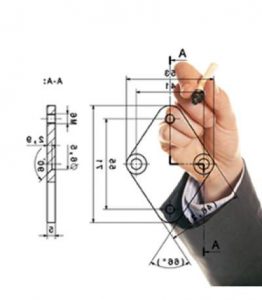Building a hardware startup is not for the faint of heart. In an ideal world, we would be able to eliminate all risk and guarantee ourselves success—since that isn’t possible, the next best thing is to find ways to reduce risk as you develop and bring your product to market. By reducing risk in a number of areas you are increasing your chances for success. Below are a few ideas on how to reduce risk for your hardware startup.
 Build Prototypes
Build Prototypes
Developing and building a prototype proves that you can construct and deliver a finished product with the capabilities you want in your product, while staying on budget. A prototype is a baseline for your team and lets you work out any issues early in the design process. During prototype development you will also be able to assess if there are alternate and more efficient ways of building your product—thus, saving both time and money.
Along with prototype development, you want to start the DFM (design for manufacturability) process immediately. This means that you are developing your product to best fit manufacturers’ capabilities and requirements. It can be a costly mistake to build a product with the mindset that a manufacturer will just be able to deliver what you provide them—this is almost never the case. To avoid the (costly) risk of having to redesign your product, start the DFM process congruently with prototype development.
Gather Design Feedback
While you will have an engineering partner working on the development of your hardware product, it is always a good idea to get another set of eyes to review the design. Large corporations have multiple engineers review products to verify the design and provide valuable feedback, before manufacturing begins. A hardware startup doesn’t have the budget of a large corporation, but it can emulate this valuable business practice to reduce risk.
Connect with the Audience
Start building your audience and defining your target market early in the product development cycle. Your target market will be able to provide you with design feedback from a customer point-of-view and also help build interest in your brand. If you wait to connect with your audience until after you launch, you have done your startup a disservice by not building excitement early on and gaining market traction. When you build a rapport with your target market before your product launch, you will have customers ready to buy your product as soon as it’s available.
Building a hardware startup can be challenging; however, with some foresight you can greatly minimize risk while increasing your chance for success.
_______
3D Innovations is a Product Development Company – from the 3D Design to a fully functional 3D Prototype & Product.
Subscribe to the 3D Innovations newsletter on our Facebook page!

